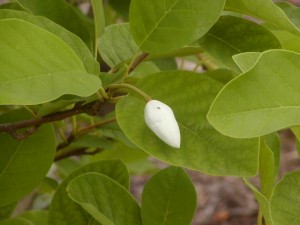A goal of most rose gardeners (rosarians) is to grow them almost maintenance free. The improved shrub roses introduced almost two decades ago have brought this too reality. Rose series such as Knockout®, Home Run®, Drift®, OSO Easy®, Carefree® and Meidiland™ are among the best. No matter the pedigree of the rose, selecting a […]
Archive for the ‘Flowering’ Category
Beautiful Giant Dogwood Has Some Limitations
Giant dogwood (Cornus controversa) is a medium-sized deciduous tree that grows to 35 to 40 feet high (in the wild to 60 feet) in USDA hardiness zones 5 to 7. This Asian native (China and Japan) is cherished for its distinctive horizontal (tiered) branching habit. Giant dogwood prefers an acidic, organically rich, moisture, well-drained soil. […]
Start Spring Out with Easy To Grow Japanese Pieris
Japanese pieris (Pieris japonica) offers a year-round show in a garden with evergreen foliage and showy bell-shaped blooms (USDA hardiness zones 5- 8). New spring foliage starts out bronze-colored and matures to dark green. Attractive, pendulous branches if ivory white flower appears in early spring. Remnants of the old seed heads generally persist into the […]
Small (Dwarf) Crape Myrtles Becoming The Vogue
‘Tightwad Red’ Crape Myrtle Over the past quarter century crape myrtles (Lagerstroemia spp.) have become the quintessential flowering shrubs of summer along with hydrangeas (Hydrangea spp.), altheas (Hibiscus syriacus), and chaste tree (Vitex agnus-castus). Crape myrtles are grouped into four distinct size categories: trees, large shrubs, medium shrubs and dwarf sizes. A spate of new dwarf […]
Tree and Berry Fruit Pollination Chart
A frequent question of newbie fruit gardeners is what will pollinate what. Do I need many varieties or can all be the same variety? The four common terms are used: Self-pollinated: transfer of pollen occurs within the same variety. Cross-pollinated: transfer of pollen occurs between two varieties. Self-unfruitful: low fruit set unless the blossoms […]
Autumn Colors Conclude with Callery Pears
Callery pear (Pyrus calleryana) has been declining in planting popularity. But its scarlet red leaf color is both sensational and reliable every autumn in the Southern Appalachian region (USDA zones 6 and 7). Most people identify the tree by its cultivar name, e.g. ‘Bradford’, Aristocrat®, ‘Cleveland Select’, ‘Redspire’ pear. There are many other cultivars. Callery pears are tough reliable medium sized trees which […]
Summer Blooming Oyama Magnolia

A friend on vacation sent me the attached photo from Wooster, Ohio. When I told him that it was Oyama magnolia (Magnolia sieboldii), he asked why gardeners are not growing it. Good question! Oyama magnolia is a 10-15 feet tall (and equal spread) deciduous tree or large shrub from eastern Asia. It prefers to grow […]
Double Take™ Flowering Quinces
Photo credit: Dr. Tom Ranney, NCSU Research Horticulturist Flowering quince (Chaenomeles spp) is an early spring flowering shrub, treasured for its brightly colored blooms (USDA hardiness zones 5-9). Old fashioned quince shrubs produced small amounts of fruits which were gathered and prepared into yummy jelly in the autumn kitchen. These often large 10-12 foot tall shrubs produced small sharp […]

 Posted in
Posted in 

